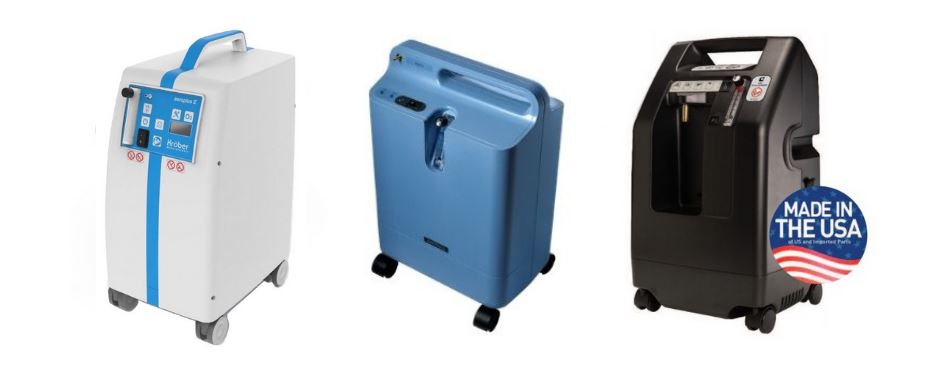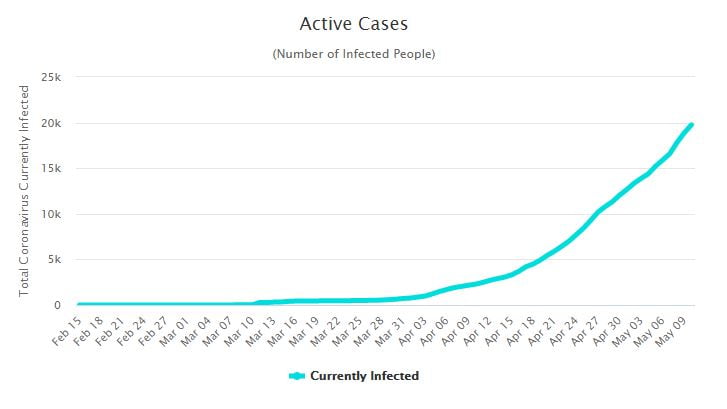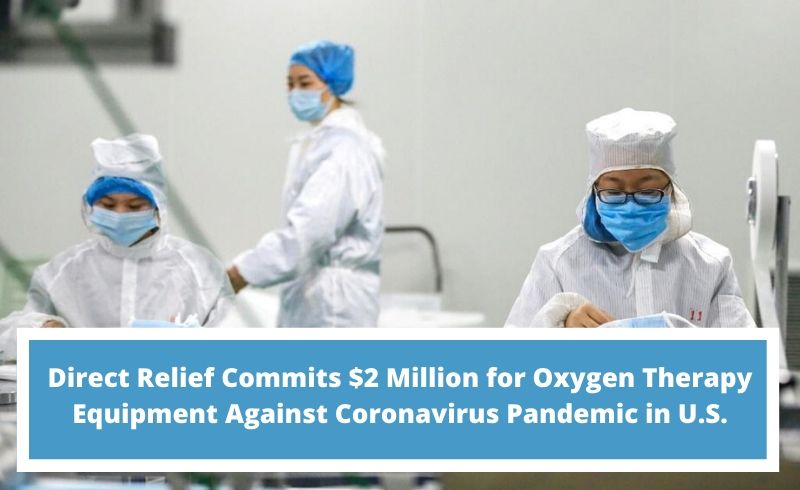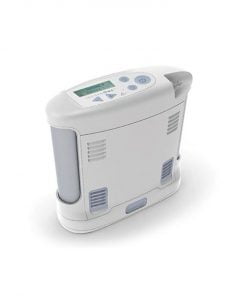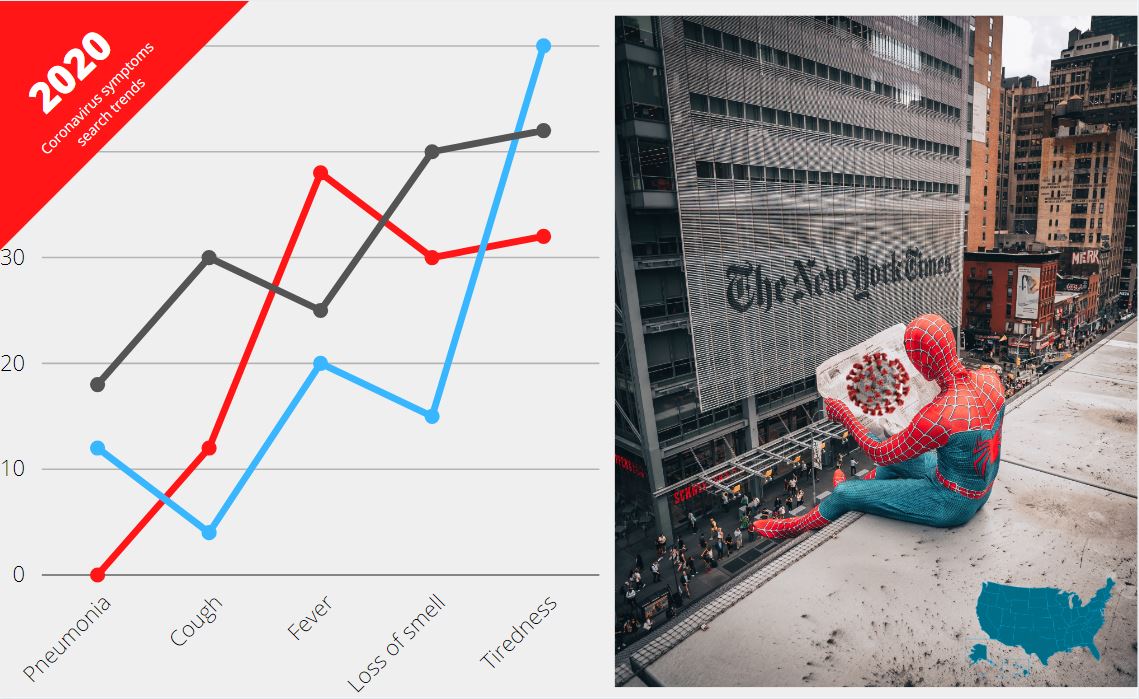
Who made the coronavirus vaccine? How many people died of Coronavirus today? Why is it called coronavirus? Did Dolly Parton fund Moderna’s vaccine? All of these are actual questions US searchers have been asking every day, according to official Google Search dataset.
Along the most popular searches are more than 400 symptoms, signs and conditions related to the global Coronavirus pandemic.
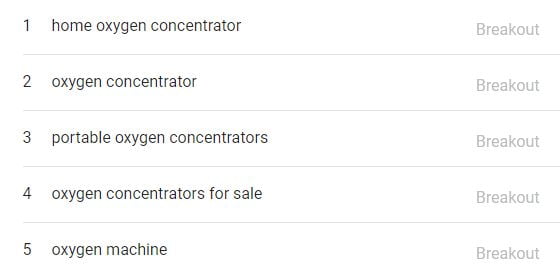
Until now, we’ve seen a rather significant rise of queries related to oxygen therapy and specifically “home oxygen therapy” carried out with an oxygen concentrator device. These are machines that create pure oxygen out of the surrounding air and delivering it to a user / patient with respiratory problems, including COVID-caused pneumonia.
Related news: Oxygen Concentrators INOGEN Become Part of Coronavirus Response in US
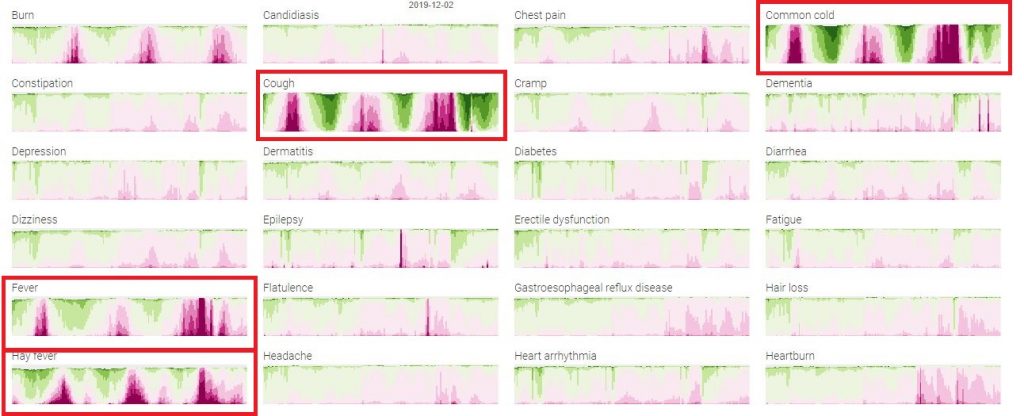
Here is the full list of 87 most searched symptoms and conditions from 2018 to the present day.
| Abdominal obesity | Hypertension |
| Abdominal pain | Hypotension |
| Acne | Hypothyroidism |
| Alcoholism | Indigestion |
| Allergy | Infection |
| Anemia | Inflammation |
| Anxiety | Insomnia |
| Arthritis | Iron deficiency |
| Asthma | Itch |
| Attention deficit hyperactivity disorder | Kidney failure |
| Autoimmune disease | Kidney stone |
| Back pain | Knee Pain |
| Bleeding | Low back pain |
| Bloating | Major depressive disorder |
| Bone fracture | Migraine |
| Bruise | Myocardial infarction |
| Burn | Nasal congestion |
| Candidiasis | Nausea |
| Chest pain | Neck pain |
| Common cold | Obesity |
| Constipation | Otitis |
| Cough | Pain |
| Cramp | Panic attack |
| Dementia | Paresthesia |
| Depression | Perspiration |
| Dermatitis | Pneumonia |
| Diabetes | Psychosis |
| Diarrhea | Scar |
| Dizziness | Sinusitis |
| Epilepsy | Skin condition |
| Erectile dysfunction | Skin rash |
| Fatigue | Skin ulcer |
| Fever | Sleep disorder |
| Flatulence | Sore throat |
| Gastroesophageal reflux disease | Stroke |
| Hair loss | Swelling |
| Hay fever | Type 2 diabetes |
| Headache | Urinary incontinence |
| Heart arrhythmia | Urinary tract infection |
| Heartburn | Vaginal discharge |
| Hemorrhoids | Vomiting |
| Hypercholesterolemia | Wart |
| Hyperglycemia | Weight gain |
| Xeroderma |
Further research of the currently trending coronavirus topics lead us to another breaking trend – Dolly Parton’s April donation of $1 million to coronavirus research at Vanderbilt University, which, ultimately, helped fund Moderna’s COVID-19 vaccine. The newly announced vaccine became the second COVID-19 vaccine with a strikingly high success rate, according to announced data. According to Moderna, it’s vaccine is 94.5% effective against the infamous virus.
